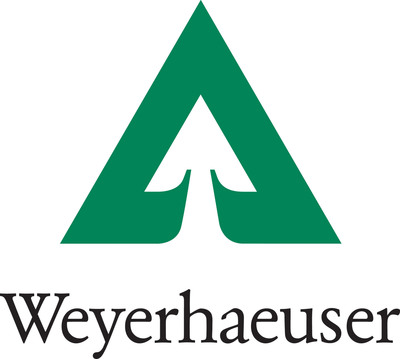Weyerhaeuser and Lapis Energy Announce Carbon Sequestration Exploration Agreement
- None.
- None.
Insights
An exclusive exploration agreement for subsurface carbon dioxide sequestration, such as the one between Weyerhaeuser Company and Lapis Energy LP, indicates a proactive approach towards environmental sustainability and climate change mitigation. From an economic standpoint, this move could be seen as a strategic investment in green infrastructure, which is becoming increasingly important for companies aiming to reduce their carbon footprint and comply with tightening environmental regulations.
Carbon capture and sequestration (CCS) is a technology aimed at reducing greenhouse gas emissions and it is gaining traction as part of the broader carbon trading markets. The development of CCS projects could potentially generate new revenue streams for Weyerhaeuser through the sale of carbon credits. Moreover, the scale of the agreement—covering 187,500 acres across three states—suggests significant potential for carbon sequestration, which could have a notable impact on regional carbon markets.
However, the success of such projects hinges on the technical feasibility and cost-effectiveness of the sequestration sites. The exploration phase is critical to ensure that the sites can permanently store CO2 without leakage. Long-term, the environmental and economic benefits of such projects will depend on the integration of CCS technology into national and international frameworks for carbon pricing and climate policy.
The partnership between Weyerhaeuser and Lapis Energy LP signals an important shift in the energy sector towards sustainable practices. As a timberland company, Weyerhaeuser's involvement in carbon sequestration projects could enhance its corporate image and demonstrate its commitment to sustainable land management. For Lapis Energy, this move positions them as a significant player in the independent carbon sequestration storage market.
From a market perspective, this agreement could give both companies a competitive edge, especially in regions near the Gulf Coast, which is known for its concentration of industrial activities. If Lapis successfully develops these sites, they could offer a valuable service to industrial companies looking to offset their emissions. This would not only help in reducing the carbon footprint but also provide a compliance solution for industries under pressure to meet environmental standards.
Investors should monitor the progress of the exploration and subsequent development phases closely, as they could lead to substantial capital expenditures. However, the potential for long-term returns through operational sequestration sites could be significant, especially if carbon pricing mechanisms become more stringent, thereby increasing the value of carbon credits and the demand for CCS technology.
The agreement between Weyerhaeuser and Lapis Energy LP to explore carbon sequestration opportunities is a forward-looking initiative that aligns with global sustainability goals. It reflects a growing trend among companies to invest in climate change solutions and could serve as a model for other landowners and energy firms.
For stakeholders, such as shareholders, customers and the local communities, the potential benefits are multifaceted. Shareholders could see an increase in the company's value due to its enhanced sustainability profile. Customers, particularly industrial ones, would benefit from the ability to mitigate their emissions through a local sequestration service, which could improve their own sustainability ratings. Local communities might experience environmental benefits from reduced atmospheric CO2 levels.
However, the actualization of these benefits depends on the successful assessment and development of the sequestration sites. It is also essential to consider the environmental impact of the sequestration process itself, including the potential risks associated with CO2 leakage and the long-term monitoring required to ensure the safety and integrity of the storage sites.
Exclusive two-year agreement covers 187,500 acres across
Under the exclusive two-year agreement, Lapis will determine the sequestration potential of each site. Upon successful completion of the technical and commercial assessments, Lapis will have the option to move sites into full-scale development agreements and complete the work required to permit, build and operate permanent CO2 sequestration sites serving large-scale industrial sources.
"This exploration agreement represents a unique opportunity to scale our CCS offerings and build our climate solutions portfolio more broadly," said Russell Hagen, senior vice president and chief development officer for Weyerhaeuser. "We look forward to working with Lapis to unlock the value of CCS development across our ownership in the
"We are delighted to form this relationship with Weyerhaeuser, the largest timberland owner in
ABOUT LAPIS ENERGY
Lapis is the Partner of Choice for energy-intensive industries seeking to achieve their carbon goals through the delivery of carbon capture and sequestration (CCS) projects. Located in
ABOUT WEYERHAEUSER
Weyerhaeuser Company, one of the world's largest private owners of timberlands, began operations in 1900 and today owns or controls approximately 10.5 million acres of timberlands in the
FORWARD-LOOKING STATEMENTS
This press release contains forward-looking statements concerning Weyerhaeuser Company and its subsidiaries ("Weyerhaeuser") including, but not limited to, with respect to the potential for carbon sequestration projects on Weyerhaeuser lands as well as Weyerhaeuser's efforts to build its Natural Climate Solutions business. Forward-looking statements can be identified by the fact that they do not relate strictly to historical or current facts and use words such as "look forward" and "will" or employ references to future dates, events or expectations. These forward-looking statements are based on Weyerhaeuser's current expectations and assumptions and are not guarantees of future events or performance. The realization of Weyerhaeuser's expectations and the accuracy of its assumptions are subject to a number of risks and uncertainties that could cause actual results to differ materially from those described in the forward-looking statements. These risks and uncertainties include, but are not limited to, those described in Weyerhaeuser Company's 2023 Annual Report and Form 10-K, as well as those set forth from time to time in its other public statements, reports, registration statements, prospectuses, information statements and other filings with the SEC. It is not possible to predict or identify all risks and uncertainties that might affect the accuracy of Weyerhaeuser's forward-looking statements and, consequently, its descriptions of such risks and uncertainties should not be considered exhaustive. There is no guarantee that any of the events anticipated by these forward-looking statements will occur, and if any of the events do occur, there is no guarantee what effect they will have on Weyerhaeuser's business, results of operations, cash flows, financial condition and future prospects. Forward-looking statements speak only as of the date they are made, and Weyerhaeuser undertakes no obligation to publicly update or revise any forward-looking statements, whether because of new information, future events or otherwise.
For more information contact:
Weyerhaeuser
Analysts – Andy Taylor, 206-539-3907
Media – Nancy Thompson, 919-861-0342
Lapis Energy
Media & Analysts – Lauren Berry, 214-729-6551
![]() View original content to download multimedia:https://www.prnewswire.com/news-releases/weyerhaeuser-and-lapis-energy-announce-carbon-sequestration-exploration-agreement-302073294.html
View original content to download multimedia:https://www.prnewswire.com/news-releases/weyerhaeuser-and-lapis-energy-announce-carbon-sequestration-exploration-agreement-302073294.html
SOURCE Weyerhaeuser Company








